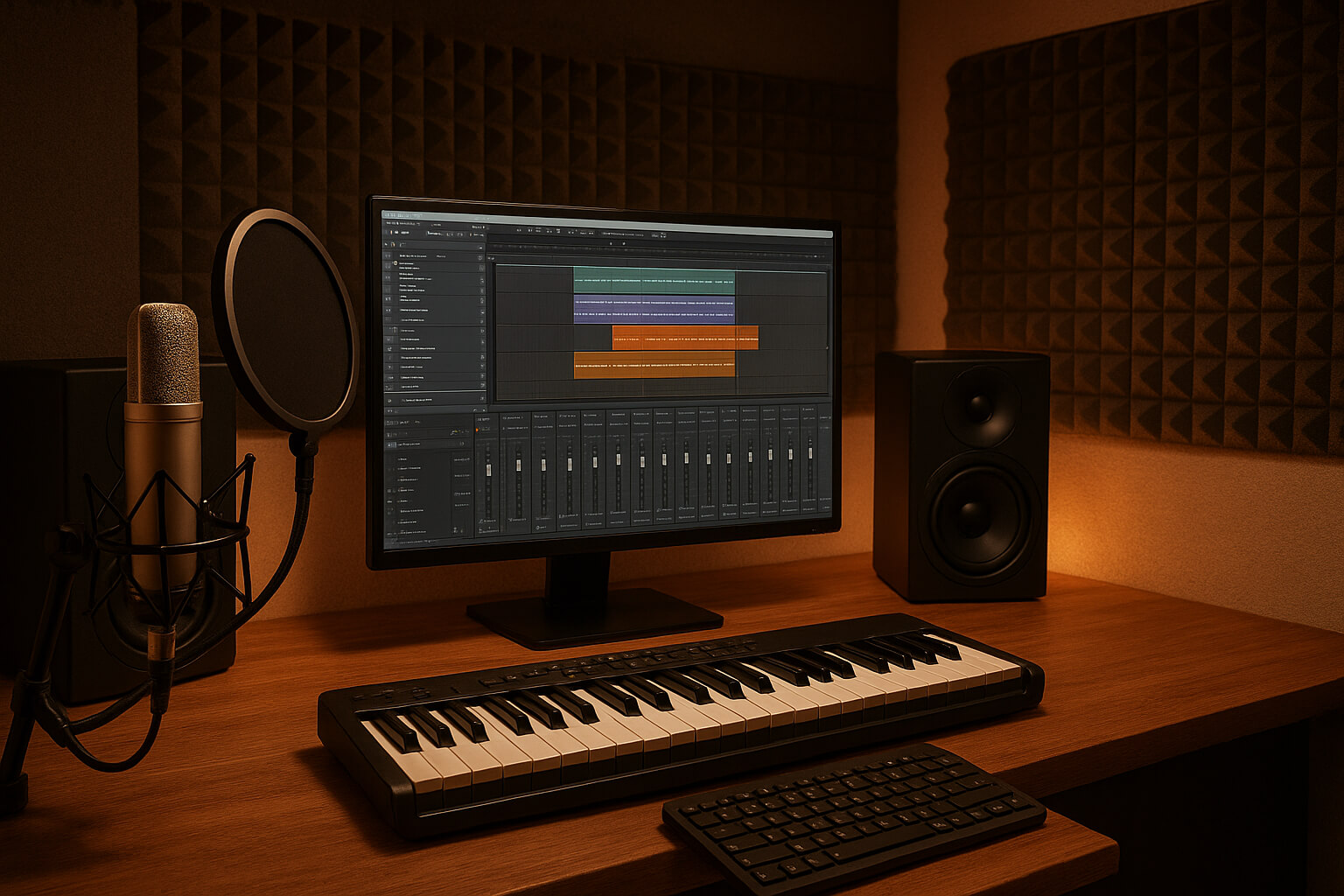August 14, 2025

Setting up a home recording studio can seem like a daunting task, especially for newcomers to music production, but with the right equipment and some careful planning, it's completely achievable. Whether you're a singer, musician, or aspiring producer, having your own studio setup allows you to create high-quality recordings without the need for a professional studio space. This guide will walk you through the basics of building your own home studio, from choosing the right space to understanding key pieces of equipment and software.
The first step in creating your home recording studio is selecting a space that minimizes external noise and provides an environment that’s acoustically friendly. Here’s what to consider:
Now that you’ve selected your space, it’s time to invest in the key hardware you’ll need to start recording. As a beginner, you don’t need to break the bank to get professional-sounding recordings, but the right equipment is crucial. Here are the must-haves:
The audio interface is the bridge between your instruments and your computer. It converts analog signals from microphones and instruments into digital audio that your computer can process. For beginners, reliable and budget-friendly options include:
You can learn more about audio interfaces and how to choose the right one for your needs in this detailed guide.
The type of microphone you choose will depend on the kind of recordings you do. Here are a couple of options for different needs:
For a comprehensive comparison of different mic types, check out this microphone types explained guide.
When it comes to mixing and recording, accurate playback is essential. Here’s a breakdown:
To help you decide between studio monitors and headphones, read this comparison guide.
A Digital Audio Workstation (DAW) is the software that allows you to record, edit, mix, and produce your music. Here are some beginner-friendly DAWs to consider:
For a deeper understanding of DAWs and how to choose the right one for your needs, read this detailed explanation of DAWs.
One of the biggest challenges in a home studio is dealing with sound reflections and room noise. Acoustic treatment can significantly improve the quality of your recordings. Here are some simple and effective solutions:
For a deeper dive into home studio acoustics, check out resources like Sweetwater’s home studio acoustics guide for tips on how to optimize your recording environment.
Once you’ve got the core equipment set up, don’t forget the smaller but essential accessories:
Make sure your computer has enough RAM and storage to handle your DAW, plugins, and recordings efficiently.
Here are some tips to improve your workflow and recording process:
The home recording process doesn’t stop once you’ve recorded your tracks. Understanding mixing, compression, EQ, and reverb can take your recordings to the next level. For tips on mixing and mastering your tracks, check out guides like:
As you experiment with your gear and techniques, always keep learning and exploring new methods to refine your sound.
Building a home recording studio is a rewarding and creative journey. With the right equipment, acoustic treatment, and a solid understanding of the technical aspects, you can create professional-quality recordings from the comfort of your home. Use this guide as a starting point and continue to expand your knowledge, improve your skills, and explore new possibilities in music production. Happy recording!
Stay up to date with the latest tips, expert insights, product reviews, and step-by-step guides to help you grow, create, and succeed—no matter your industry or passion.